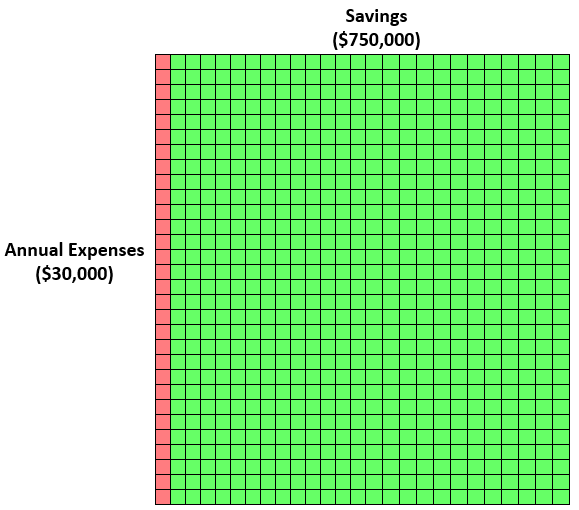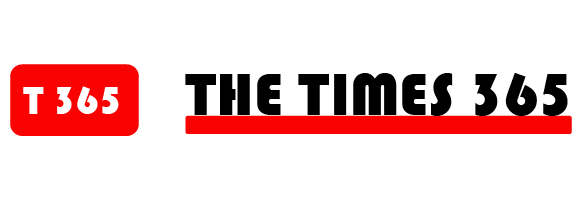In the 20th Century, people worked for 40-50 years, then retired. The office or factory threw a little shindig with cake or beer, then the retiree went home and sat on the couch—for the rest of their life.
That’s not my plan.
I want to work for the next 4-5 years, then have the option to retire. In other words, reach financial independence, throw a little shindig with cake or beer, then keep working.
Or not, as I feel like it.
Whether you’re 22 and looking to reach financial independence young or 62 and looking for the accelerated fast track to retirement, here are seven steps to help you get there faster. You don’t have to do all seven—but you should.
Start your engines and approach the starting line!
7 Steps to Reach Financial Independence in 5-10 Years
1. Visualize it, then realize it.
You need a plan. No, you need more than plan; you need a vision.
Most of the other steps in this fast track to FI will require enormous discipline. That might mean driving a 10-year-old beater instead of brand new Beemer. It might mean house hacking a duplex instead of a suburban house with a white picket fence. Or perhaps a hiking and camping trip instead of touring Europe.
To convince yourself and your spouse to make the necessary sacrifices, you’ll need a crystal-clear image in your mind of what you’re prioritizing over the instant gratification that your friends enjoy.
Steve from Think Save Retire put it succinctly: “Without a plan (or a purpose), we don’t know what we’re saving for.”
No matter what your dreams are once your reach financial independence, visualize them. See yourself eating peppercorn-encrusted filet mignon at a Paris sidewalk café. Or enjoying a mid-Tuesday stroll with your children, instead of having them shuffled off to daycare. “This plan will mentally set the piece into place by giving you a purpose for your newfound saving regimen.”

Related: Does the 4% Retirement Spending Rule Still Hold Up—And Where Do Rentals Fit in?
2. Max your tax advantages.
Every dollar lost to taxes is exactly that: lost money. Money that could have been invested and multiplied a hundredfold through compounding.
There are dozens of ways to reduce your tax liability, but here are the most important.
First, max out your IRA or Roth IRA. Steve from Think Save Retire continues: “If you’re trying to accelerate your savings, you gotta max out your retirement accounts every year. Prioritize your retirement. You’ll come home with less money, but who cares? Your main focus is on your life after calling it quits.”
Adults under 50 can invest $5,500 tax-free in their IRA every year. Those over 50 can invest $6,500. Take advantage of every last penny.
Second, max out your 401(k), 403(b), or similar employer-sponsored retirement account, if possible. The contribution limits for employees are over three times higher than IRAs, at $18,000 for those under 50 and $24,000 for adults over 50.
If your employer doesn’t offer one, look into starting your own. As a real estate investor, you are a small business owner. And if the idea sounds like a lot of work, consider that you’ll get to take even higher contributions as the employer: a maximum of $53,000 for adults under 50, and $59,000 if you’re over 50.
That’s a lot of tax-free money!
Finally, invest in real estate. You’ll benefit from all the tax advantages available to real estate investors, plus all the other benefits of owning real estate, for retirement purposes.
Let’s explore a few of those, shall we?
3. Invest in rental properties.
Most obviously, rental properties produce passive income, which is the name of the game for financial independence and retirement.
But it goes further than that.
Rental properties help you bend the 4% Rule, so that it takes less of your cash to produce more passive income.
Set aside any grievances you have with the 4% Rule; what’s relevant isn’t an exact safe withdrawal rate, but the concept of how much cash you need to invest to build replacement income. For the purposes of this conversation, we’ll use 4%.
To replace $40,000 of job income, you’d need a nest egg of a million ($1,000,000) dollars. That’s a tall order—and exactly why it took people in the 20th Century 40 years to retire! They had to wait around for all their investments to compound enough to reach such lofty heights.
Related: My First Month of Early Retirement: How I’m Spending My Newfound Freedom
But replacing $40,000 with rental income? That’s net rental cash flow of $3,333/month. You could earn that with one or two properties owned free and clear or a handful of properties financed at 80% LTV.
Just to use easy math, say you buy properties that rent for 1.5% of the purchase price. That means roughly $222,000 worth of real estate to produce $3,333/month in gross rents. Let’s double that to $444,000 to account for expenses (exercising the 50% Rule).
Just by investing in rentals instead of stocks or bonds, you’ve cut your target nest egg by more than half, from $1,000,000 to $444,000.
And that’s not even taking advantage of leverage.
4. Use leverage to accelerate your investments.
Say you use 80% financing to buy ten rentals. Each rental cost $100,000, which means a down payment of $20,000. We’ll kick in $5,000 apiece for closing costs and/or repairs.
You’ve invested $250,000 of your own cash. You have a portfolio worth $1,000,000, and we’ll keep using the same numbers from above: Rents are 1.5% of the purchase price. That means $15,000/month in gross rents.
Cut that in half for expenses, leaving you with $7,500/month.
Let’s say you’ve borrowed your $800,000 at 5% for 30 years. That’s a monthly P&I cost of $4,294.57 (we’ll round it up to $4,300).
That means your net cash flow is $7,500 – $4,300 = $3,200.
Which is awfully close to your target of $3,333/month in net rental income. Only this time, instead of requiring $1,000,000 in equities and bonds or $444,000 in rentals bought with cash, you’re down to only $250,000.
Conventional wisdom in retirement planning is to move away from high-risk, high-return investments and toward low-risk, low-return investments, as you get closer to retirement, to reduce sequence risk.
Mark Ferguson of InvestFourMore makes a strong counterargument: “If you really want to take advantages of the benefits of real estate as a retirement vehicle, you may need to get more aggressive instead. If you buy three properties with a loan instead of one with cash, that have good rent to value ratios, you will have more cash flow, more tax advantages, more equity, more appreciation potential, and more diversification.”

5. Shave your expenses.
So far, we’ve focused on investing your money for the greatest impact on your bottom line.
Which is great if you have an extra $20,000 lying around, but where does that money come from?
It comes from curbing your lifestyle and living with less than the Joneses.
Steve recommends putting every expense under the microscope to find a way to reduce or eliminate it. “Your lifestyle has a profound impact on how early you can reasonably quit your full-time job. The less expensive your lifestyle, the easier retirement will be. Downsize as much as possible.”
This helps you free up more of your money for investing, of course, but if you can keep your expenses low in retirement, it also means less income you have to replace with investment income.
To return to the 4% Rule, you would need $25,000 saved for every $1,000/year you spend in retirement. That’s why every dollar you spend needs to go under the microscope—if you want to reach financial independence fast, it helps to have a closer finish line.
Consider this (troubling) visualization from Zach at FourPillarFreedom:

That’s a lot of green savings blocks required, to produce very few red spending blocks!
6. Boost your income pre-retirement.
Cutting expenses helps. And it’s even more effective if you can simultaneously raise your income.
Michelle from Making Sense of Cents recommends finding creative ways to earn more while you’re still healthy and in your peak earning years. “That could mean getting into rental real estate, finding a part-time job, starting a side business, reaching for that next promotion, or dozens of other ideas.
”I always like to point out that the average person watches over 30 hours of TV a week. That time could be used towards making more money instead!”
It’s far easier to earn more money while you’re already in the workforce, with a network of people in your industry. Take advantage of your youth, energy, and connections while you have them!
7. Boost your income post-retirement.
Who says retirement has to mean never working again?
Choncé Maddox of My Debt Epiphany recommends a multi-pronged approach to income post-retirement. “Determine how much you want to spend during retirement, and consider whether you can supplement those living expenses with social security, a part-time job, or a side business.”
Besides, people who continue working in some capacity tend to live longer.
And for that matter, who says financial independence has to mean retirement?
It will be a beautiful day when you can live on the passive income from your investments. But that doesn’t mean you can’t keep on earning and investing.
Chris Mamula of Can I Retire Yet? underscores how to circumvent the 4% Rule by earning post-retirement. “One would have to save $250,000 to support $10,000 of retirement spending. That could be a major challenge to accomplish in a short time frame.
“Conversely, it would not be very hard for most people to earn an extra $10,000/year doing a minimal amount of reasonably enjoyable work in retirement.”
What kind of work could you do in retirement, that would be more fun and lower-stress than your current job? Perhaps you’d like to tutor children, teens, or college students? Maybe you’d enjoy working at a winery and teaching guests about the wine they’re tasting?
Start thinking about ways to cobble together income from multiple sources. If you can supplement the income from your rental properties, stock dividends, bonds, and Social Security (if you’re old enough) with part-time or freelance work, you can postpone actually selling off your equities portfolio and drawing it down.
With true financial independence, you won’t need to sell a single asset, because they produce enough passive income to cover your living expenses indefinitely!
What are your tips for reaching financial independence and early retirement quickly? What’s your plan, and how has it worked for you so far?
Weigh in below!
Note By BiggerPockets: These are opinions written by the author and do not necessarily represent the opinions of BiggerPockets.







